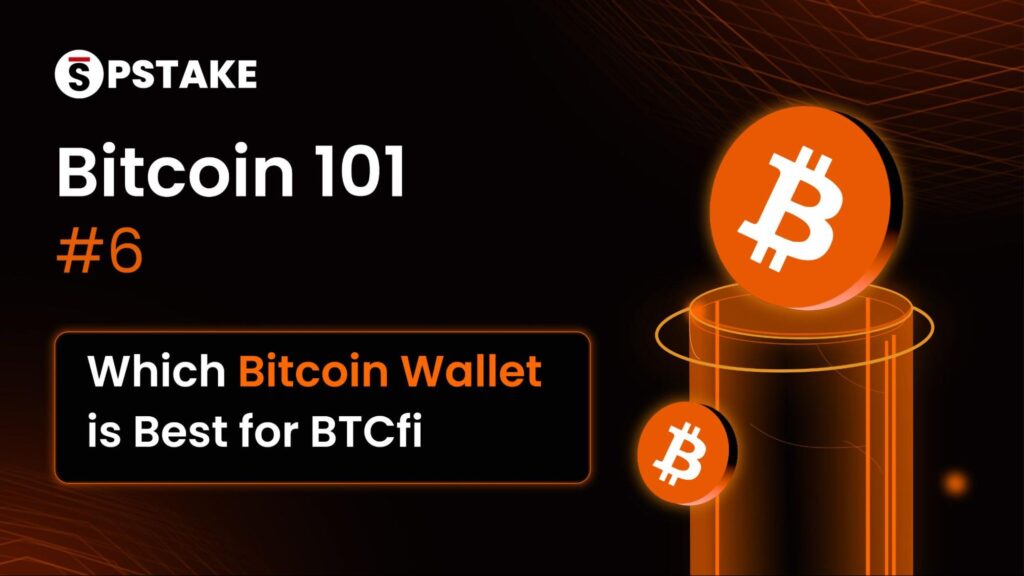With pStake Finance moving into the heart of the Bitcoin ecosystem on its mission to provide native Bitcoin yields to holders, we’ve crafted this Bitcoin 101 series to help newcomers understand the number-one-ranked cryptocurrency slightly better.
With thousands of articles relating to Bitcoin available online, we hope our series can condense the complex information, demystify the confusing jargon, and provide an insightful overview of the granddaddy of the crypto world.
In our first entry, we introduced you to the basics of Bitcoin, the pioneering digital currency that has revolutionized how we perceive and interact with money in the digital age. Then, we continued to overview the Proof-of-work (PoW) consensus algorithm that powers the Bitcoin network’s security.
Today, we’re covering the most innovative technologies to ever exist, on which Bitcoin is built upon and has even spawned an entire industry: the Blockchain.
To put it simply, Bitcoin is a digital currency that operates on top of the Blockchain. The Blockchain is the underlying technology that enables Bitcoin to function as a decentralized, secure, and transparent system of value exchange.
So, top up your coffee (or tea – we don’t judge) and prepare to continue binge-reading through this series about Bitcoin.
What is Blockchain
While the term ‘blockchain’ is often associated with Bitcoin, it’s important to note that this technology has practical applications that extend far beyond the realm of cryptocurrency.
Simply put, a blockchain is just a decentralized database, a concept that might sound complex but is actually quite straightforward. In other words, it’s like a giant Google Spreadsheet that’s entirely decentralized, secure, and verified through magical algorithms.
Let’s take a look at the Wikipedia definition of blockchain:
A Blockchain is a distributed ledger that maintains a continuously growing list of ordered records linked using cryptographic techniques.
Now, if you’ve been binging the series so far, you’ll know we’re all about demystifying the jargon and removing the fancy lingo. So, let’s do what we always do and break down this definition for you.
A Blockchain is a distributed ledger…
A distributed ledger is as simple as it sounds—it’s a record of financial accounts distributed across several locations.
A blockchain is a standard ledger containing information distributed across a network of nodes that actively work to keep updated copies of the database.
In the case of Bitcoin, the blockchain serves as a verified ledger containing all of the network’s transactions.
…that maintains a continuously growing list of ordered records…
The idea of a database or a ledger is to keep a list of information that continues growing.
That’s also what a blockchain does.
It maintains a growing list of records and orders them inside blocks that create a chain. Each block in the blockchain contains a specific set of ordered information.
In the case of Bitcoin, that information would relate to the transaction details of people sending Bitcoin to each other.
…linked using cryptographic techniques.
Information in a standard ledger is typically held in one file on one computer and is usually maintained by one individual (centralized authority). Blockchain is different as it’s entirely decentralized, so there’s not one central authority.
As mentioned above, information in the distributed ledger is organized into ordered records, which are then placed into blocks. Once these blocks are filled, information then enters the next block. These blocks are then linked using cryptographic techniques to ensure security and verification. In the case of Bitcoin, the cryptographic technique used is the PoW algorithm (discussed in episode 2 of this series).
So, a blockchain is basically a distributed database shared by a network of nodes. In the case of Bitcoin, the database is stored in the full nodes and verified as each new block is added. Its objective is to maintain a secure record of all transactions on the Bitcoin network so everybody can publicly verify who owns what BTC.
But where did blockchain originate? And why wasn’t it created before?
Well, blockchain technology was invented by Satoshi Nakamato, the genius developer behind the entire Bitcoin network. Although Stuart Haber and W. Scott Stornetta initially conceptualized the concept in 1991, Nakamoto brought about its first application with Bitcoin.
How Does Blockchain Work?
The best way to visualize a blockchain is as a database where information is entered and stored into separately connected “blocks” that form a chain.
Each block contains information (such as transaction details), and it’s connected via cryptographic techniques rather than relying on a centralized server. Then, copies of this Blockchain are stored on multiple nodes throughout the network.
You see, the blockchain works to collect information and then organize it into individual blocks. Once a block is full, the data for that specific block is run through a proof-of-work (PoW) consensus mechanism. This mechanism involves a complex mathematical problem that miners on the network compete to solve. The first miner to solve the problem gets to add the block to the blockchain and is rewarded with a certain amount of Bitcoin. This process ensures that the blockchain is secure and that all transactions are verified before they are added to the blockchain.
The hash created through the PoW is then entered into the following block header – a piece of code attached to each block – and is encrypted with the information in the next block, creating a cryptographically secure series of blocks.
Once a block has been added to the chain, the data inside it cannot be altered or tampered with, making it immutable forever.
What Makes It Different From a Normal Finance Database or Regular Spreadsheet?
Blockchain differs from a traditional spreadsheet as it’s not connected to a centralized server. The data in the blockchain ledger isn’t stored on Google’s hard drive or your PC. Instead, it’s distributed across thousands of nodes participating in the ecosystem, removing the chance of a single point of failure. Furthermore, as no traditional cryptographic techniques are associated with a conventional spreadsheet, there’s no way to verify that the information hasn’t been tampered with.
In addition to its architecture, some features put blockchain in a different league from traditional spreadsheets or databases:
- Transparent – a publicly transparent blockchain means anybody can see every transaction it facilitates.
- Secure – a blockchain is secured by its consensus algorithm (i.e., PoW for Bitcoin).
- Decentralized – a blockchain is decentralized and distributed across thousands of nodes.
A blockchain also provides some huge benefits that traditional financial ledgers and regular spreadsheets can’t offer. For instance, it can reduce the risk of fraud and error, increase transparency, and streamline processes.
- Time savings – transaction times and settlements are faster as there’s no need for a centralized authority.
- Cost savings – with zero oversight required, blockchains provide exceptional cost savings.
- Tighter security – the cryptography involved helps to prevent tampering, fraud, and cybercrime, leading to tighter security.
These benefits can be particularly valuable in industries such as finance, supply chain management, and healthcare, where trust, transparency, and security are crucial.
Bitcoin Blockchain: The Most Secure and Battle-Tested
Blockchain technology isn’t exclusive to Bitcoin. In fact, 99% of all the other cryptocurrencies you’ve heard about use a blockchain. In addition, many companies are building supply chains using blockchain technology, which provides authenticity to real-world products.
However, one thing that’s exclusive to Bitcoin is the security level of the Bitcoin blockchain.
With almost a $1.5 trillion market cap, anybody who could successfully attack the Bitcoin network would become very rich. However, in its decade-long history, the Bitcoin blockchain has never been hacked – making it the most secure and battle-tested Blockchain.
Security is the main reason institutions and corporations are willing to invest billions of dollars in the Bitcoin economy over the coming years through the recently launched ETFs. As a result, all eyes are on Bitcoin again as it continues to dominate the crypto landscape, with no signs of changing in the coming decades.










